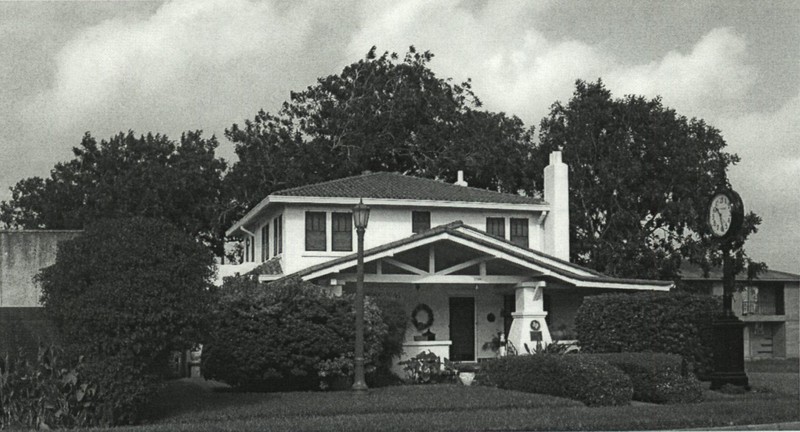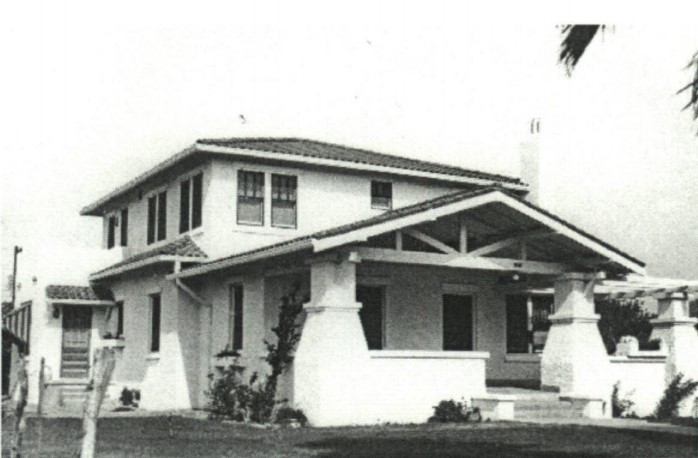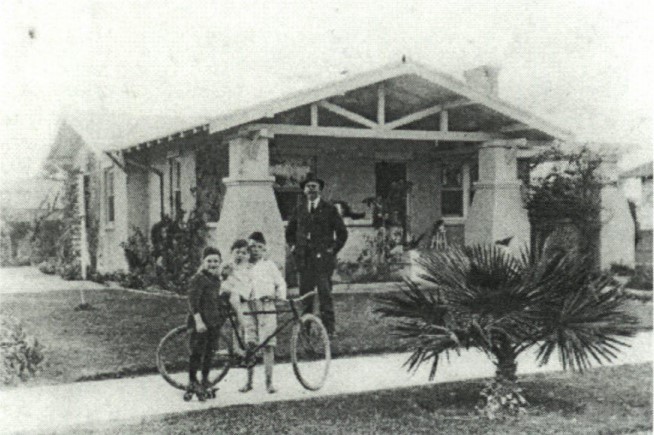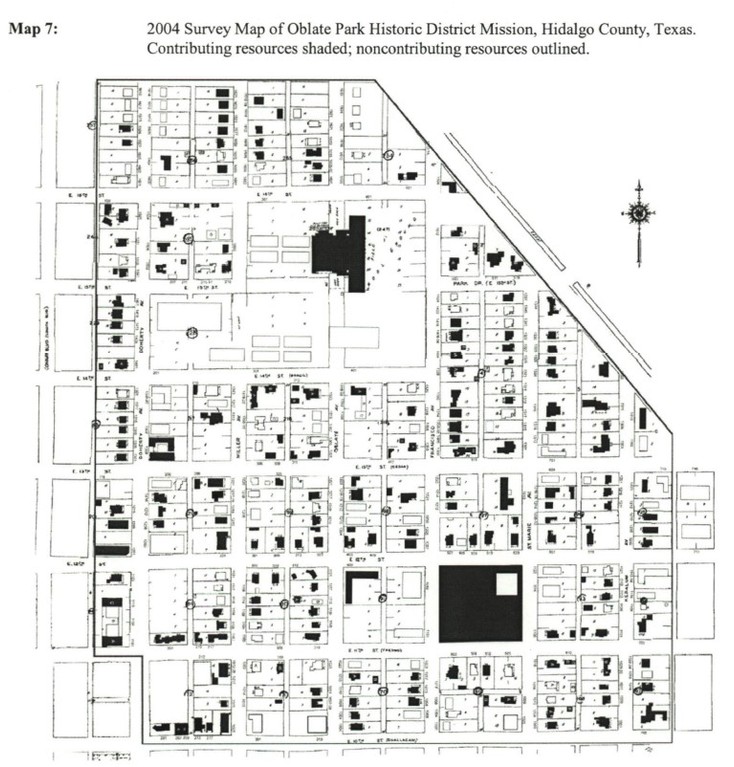Gregg Wood House and Oblate Park Historic District
Introduction
Text-to-speech Audio
Images
Gregg Wood House in 2004 photograph, in NRHP nomination of historic district (xx xxxx)

Gregg Wood House in ca. late 1920s photo after addition built (Texas Historical Commission Historical Marker Files)

circa early 1920s photo of Wood Family in front of Gregg Wood House (THC Historical Marker Files)

2005 map of Oblate Park Historic District (Myers and Thompson 2005:71, Map 7)

Backstory and Context
Text-to-speech Audio
David "Gregg" Wood purchased half of a city block from the Conway and Hoit Land Company, the founders of Mission. When Wood was elected mayor in 1915, much of the town's roads were unpaved and neighborhoods lacked electricity. The house he had built at 1215 Doherty Avenue is a twin of a house built in 1914 for the Strickland family at 1524 Doherty. The contractor for the Wood house was William Cauthern; he used handmade brick made in Madero, Texas by the Weiske Brick Company and milled lumber from Lynch Davis Lumber. The owner of the Wood House in 2005 was Richard Kemp, who preserved some of the original furniture within the historic home.
Roughly two out of three buildings in the Oblate Park National Register Historic District is a contributing resource, or about 220 of 350 buildings. The district covers about 40 city blocks over 140 acres and the resource dates are 1910 to 1955. Most of the contributing resources are single-family homes in Late Victorian and Late 19th/ early 20th century Revival or American Movement styles and are typically one story tall and set back from the street about 20 feet. There are also some multi-family residences (duplexes, triplexes and small apartment buildings) and a few schools, churches and businesses. Oblate Park is a plaza square that was set up in the 1910s by the French Catholic Oblate Fathers of Mary Immaculate when they purchased 16 city blocks and moved their church from La Lomita into the new town. Not far from two downtown commercial main streets - Conway (Lomita) Avenue and Tom Landry (Tenth) Street - the "Oblate Addition" neighborhood was practically built out by 1925, and the city bought two of the blocks for schools. The "Blake Addition", directly north of the Oblate Addition, was added to the town in the late 1920s and contains much of the growth in the historic district built in the 1930s and 1940s. While the Craftsman style continued to be used for houses, the Blake Addition's residences also were built in Eclectic revival and Ranch styles. About one half of the houses in the historic district are wood frame while the other half are brick. The Blake Addition was fully developed by 1949. A few undeveloped lots in the Oblate Addition were built up after 1925, and a few older buildings were replaced. The neighborhood is walkable; many residents didn't need to drive to get to work or school, through the 1960s.
Sources
Myers, Terri. Thompson, Emily. NRHP Multiple Property Nomination of Oblate Park Historic District. National Register. Washington, DC. National Park Service, 2005.
https://atlas.thc.texas.gov/NR/pdfs/05001459/05001459.pdf
https://atlas.thc.texas.gov/NR/pdfs/05001459/05001459.pdf
https://atlas.thc.texas.gov/NR/pdfs/05001459/05001459.pdf
